Focusrite Scarlett 2i2
+ Why Do You Need an Audio Interface?
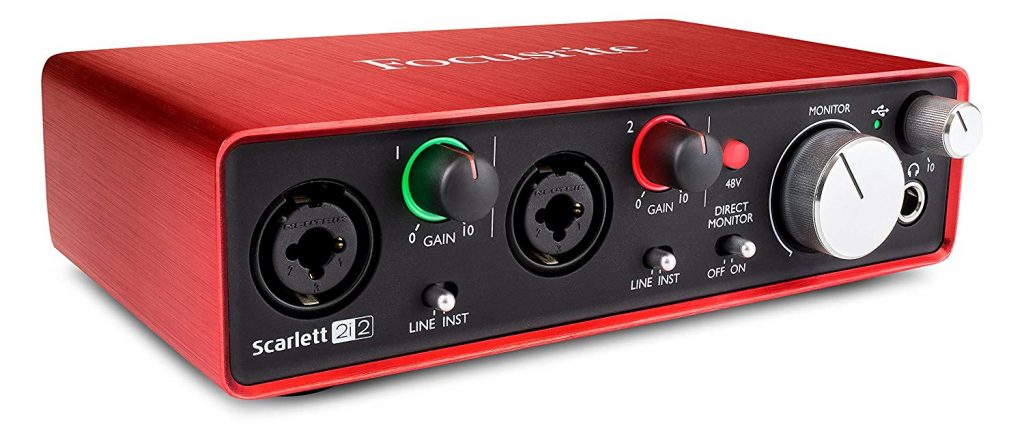
The Focusrite Scarlett 2i2 Audio Interface
The Focusrite Scarlett 2i2 is dominant in the market for audio interfaces, and one of the best-selling pieces of studio gear of all-time. This is not only due to the great value the 2i2 offers for beginner producers. It’s heavily due to its very affordable price (see current price).
But, there’s plenty of affordable audio interfaces out there. So, what is it about the Scarlett 2i2 that has made it the top choice for beginner producers?
In this article, we review the second-generation Focusrite Scarlett 2i2 (the small differences between generations will be covered later in this review).
But, before we dive into all the details of the 2i2, you may just be diving into the world of studio gear and not completely understand what an audio interface is or what it does.
So, let’s first explain what an audio interface is and why you’ll need one as a producer. (You can skip down to our Scarlett 2i2 review if you already know what an audio interface is).
Audio Interfaces Explained
Why Do You Need an Audio Interface?
Well, audio interfaces like Focusrite’s Scarlett 2i2 serve two primary functions, which are both crucial to any engineer or producer – audio quality and connectivity.
As you shop for audio interfaces, you’ll usually see that the more expensive the interface, the higher the level of audio quality (cleaner and more transparent) and connectivity (primarily, the number of inputs and outputs) you can expect.
An audio interface can be thought of as the centerpiece of most modern studios as most gear in the studio will usually run through it. But, why? What’s the purpose? And how can this help you decide whether you should buy the Focusrite Scarlett 2i2?
For Audio Quality
If you’re recording by plugging directly into your computer’s microphone input, you’re bound to end up with a poor quality recording. An audio interface connects to your computer and will take over all the audio processing for your music production. What this means is you’re no longer relying on your computer’s sound card. Instead, you have dedicated audio processing designed for music production (or any audio production).
This will help you achieve higher audio quality, mainly in terms of clean and accurate sound. Audio interfaces are more sophisticated than a stock sound card and designed with the intent of providing an uncolored and transparent signal.
When you’re producing, it’s important that the sound you’re recording is captured with minimal coloration or degradation so what you initially hear is what you play back. Sure, its fine to have analog gear that may warm up your tone and color your signal nicely. However, once it comes to capturing that sound, you want to make sure that your recording is as clean and transparent as possible.
This process of taking a signal, such as your vocals coming through your microphone (analog sound) and recording it on your computer (digital sound) is known as Analog to Digital Conversion (ADC). Audio interfaces like the 2i2 are designed to provide quality ADC so your sound experiences minimal quality loss once it becomes digital. This ensures that what you hear, is what you get.
For Connectivity
Just as critical, your PC’s stock sound card does not have the inputs and outputs necessary for real music production (“How do I plug in my new condenser mic, bro?”). Most stock sound cards will have one simple 1/8″ microphone input – designed for simple PC activities like voice chat and applications such as Skype. Chances are you may have first dove into music production with a $10 microphone designed for PC use (and maybe even a pirated copy of FL Studio).
But, the next stage in your evolution is a decent studio microphone and an audio interface such as the Scarlett 2i2 to connect it through.
An audio interface will have the needed inputs and outputs for microphones, instruments, and studio monitors (usually XLR and 1/4″ stereo). This will allow you to plug in your studio microphone or instrument to record directly into your DAW.
Audio interfaces like the 2i2 also help kill latency, since even a brief delay with your stock sound card (a nasty echo when you listen to yourself or play your instrument) can kill your recording performance.
Furthermore, it’s important that you simply understand what “interface” means (hopefully you already know what audio means.) If you Google the definition of “interface” you’ll see the following:
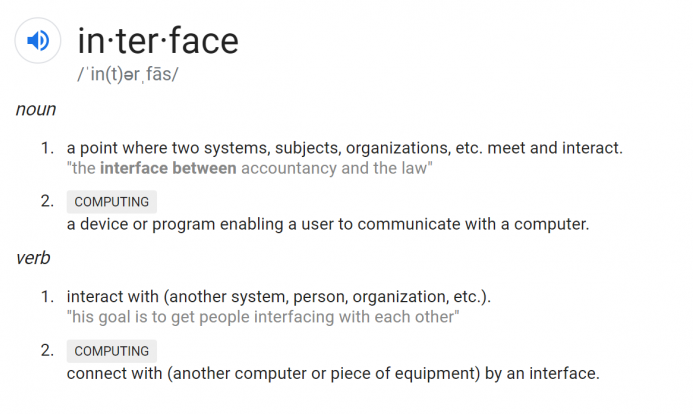
So, an audio interface serves as the point (the device) that enables your audio equipment to meet and interact with your computer. In other words, an audio interface is the bridge between your studio gear and computer.
Simply put, if you want to record or produce quality audio using your computer, you need an audio interface. And if you’re diving into the world of music production, it’s probably the first purchase you should make after your computer or laptop. So, should you ultimately choose Focusrite’s Scarlett 2i2?
Review: Focusrite Scarlett 2i2
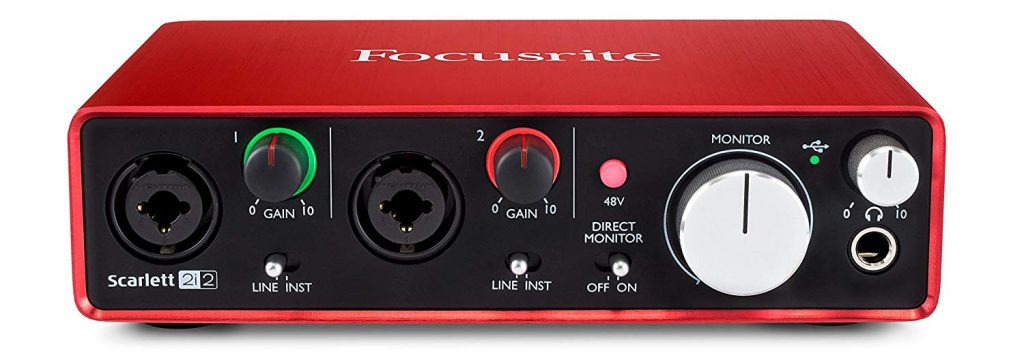
Build Quality
The appeal of the Scarlett 2i2 starts with its sleek, but simple design. The 2i2 has a very pleasing appearance that features a deep vermillion color. However, despite its almost toy-like appearance, it’s pretty sturdy. Built with a nice aluminum casing, it seems prepared for stress, transportation, and collision.
The gain knobs on the 2i2 have a very eye-catching halo, which complements the design of the audio interface. The halo will illuminate red if your signal is clipping. When you adjust to a comfortable level, it will become green again. This is a very useful feature for dialing in your levels to make sure you have a clean signal, free of distortion.
The knobs also have a very pleasant covering made of rubber, which ensures solid contact and traction when turned. The gain knobs have the right amount of resistance when they’re turned, allowing you to dial in your levels with precision. This also makes the knobs on the 2i2 feel higher quality, and not cheap and flimsy.
On the other hand, the monitor knob is the opposite of the gain controls. It’s much more prominent, which gives you a more comfortable grip. It isn’t surrounded by rubber like the gain knobs and restrained in movement. This may make this knob feel less durable, but how easily it turns may be a good thing since it’s the knob you’ll likely turn the most while producing
2i2 Portability
Measuring in at 1.8 inches tall and 5.7 inches wide, the 2i2 is really compact which makes it great for travel. Lightweight at 1.3lbs, even professional producers who own high-end audio interfaces will often opt to buy Focusrite’s 2i2 for its portability. Merely a laptop and the Scarlett 2i2 can be a powerful setup when you’re on the road.
Layout and Connections
The front panel on the Scarlett 2i2 doesn’t look very impressive due to its size and minimalist nature. Still, it has what you need for a simple and portable audio interface. The front panel has two preamp inputs which accept either XLR or 1/4″ cables. With a simple switch beneath each input, you can switch between line level and instrument level inputs as needed.

Next to the monitor gain knob is a headphone output. Above it, is its own gain control to adjust the volume of your headphones while listening.
By using the direct monitor switch on the front panel, a producer can monitor what he’s recording straight from the 2i2 before it goes through your computer. You can then quickly switch back to hear the sound running through your computer/DAW. Doing this allows you to listen to audio coming into your 2i2 with no digital latency. When tracking vocals, this can result in a better recording experience.
Setup / Installation
The people at Focusrite have invested a lot of time and effort in the user experience design of this device. The 2i2 is incredibly easy to set up and very intuitive in use. You don’t need any special knowledge or experience with audio interfaces.
Included in the box are simple instructions. You first visit their website to register your device and download the necessary drivers for your operating system.
After this, you simply connect the 2i2 to your computer via the included USB cable (which also powers the device). It is automatically detected in your system and will be ready for use within your DAW.
Sound Quality
The Scarlett 2i2 offers high-quality audio out of the box. The 2i2 supports a sample rate of up to 192 kHz at a 24-bit resolution (although most still opt to record at a 44.1 or 48khz sample rate as standard).
It is generally the case that audio interfaces in this price category do not provide the best audio quality. However, it seems that Focusrite has gone the extra mile to ensure dominance over its competitors at its low price point.
The preamps on the 2i2 provide a nice clean sound with little coloration. When it comes to the low price point of the 2i2, audio interfaces are often quite noisy and have a certain amount of hiss when cranked up. However, the 2i2 has done well with this issue. Even when cranked up to its highest levels, the 2i2 produces very little hiss and provides a clear and crisp sound.
As it comes to latency and CPU usage, the Scarlett 2i2 also performs particularly well at its price point. Because of this, the 2i2 can be a great choice even if you’re not recording audio yet.
You’ll likely notice the CPU meter in your DAW drop significantly once you upgrade from your stock sound card to the 2i2. Along with the drop in latency from the 2i2, this can result in tighter performances with your MIDI controller or keyboard. Less latency means better sounding MIDI recordings and tighter rhythms.
Latency can simply kill a performance. These benefits, along with the 2i2’s upgrade in audio quality over your stock card, makes the 2i2 a great choice even if you’re not recording audio yet and primarily focus on electronic music within your DAW (of course, you’ll also have something to plug your KRK Rokits into as well).
Free Software Included?
When you unbox the Scarlett 2i2, you’ll see there is more than just the 2i2 and a USB cable. What makes the 2i2 an even more appealing purchase is the amount of software that Focusrite has decided to include for free.
Available after download and registration, you’ll find Avid Pro Tools (First Focusrite Creative Pack), Ableton Live Lite, Softube’s Time and Tone Bundle (reverb, delay, mastering and distortion plugins), Focusrite’s Red Plug-in Suite (plugins modeled after Focusrite’s Red 2 equalizer and compressor), a choice of one of XLN Audio’s Addictive Keys virtual instruments, and 2GB of Loopmasters samples.
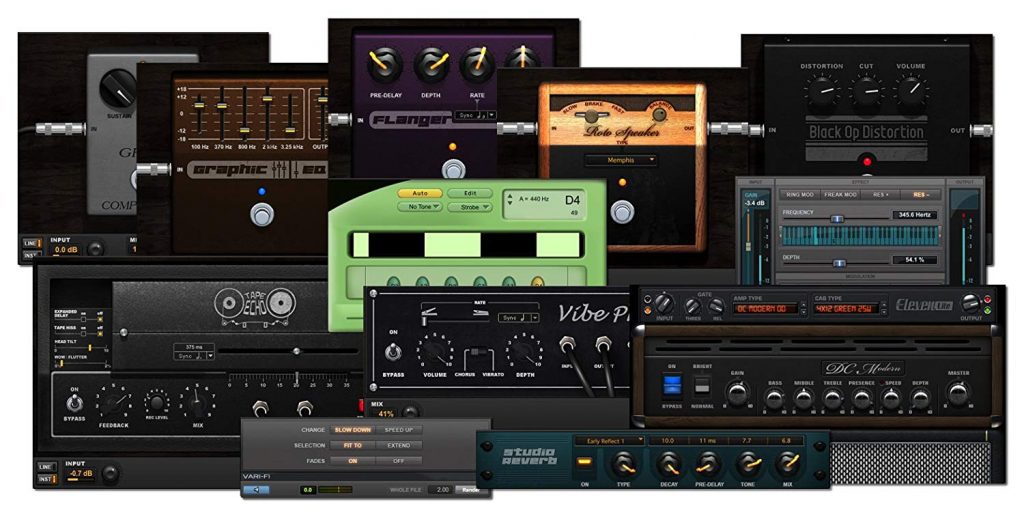
We have yet to see another audio interface in this price range bundling in this much software and extras for free.
2i2 Cons and Criticisms
So far, we’ve only had positive things to say about the Scarlett 2i2. We have had a great experience with the 2i2. Still, we know this audio interface is not perfect.
We did not experience any sound glitches or technical issues, but can clearly see that for some users this has been an issue. Taking a look at what customers said who purchased the 2i2 on Amazon, the most widely reported negative feedback is related to the 2i2’s drivers.
Reported issues range from clicks, pops and cracking within the audio, to disconnections, outages, and problems installing the drivers. Those who have experienced problems with the 2i2 also report very slow and unresponsive customer service from Focusrite.
But, it’s important to keep things in perspective. When it comes to driver and other software related issues, it’s clear that some companies produce more reliable drivers for their products than others. However, because of the many differences between computers, in terms of both software and hardware, and the various situations that can occur (especially once you introduce the human element), even the top-rated audio interfaces experience a certain percentage of negative feedback, especially related to their drivers.
Overall, the feedback from owners of the 2i2 is vastly positive, but we certainly want to consider the negative as well.
Our Negatives
As for our own criticisms of the Scarlett 2i2, we would have liked the 2i2 to have separate phantom power switches for its inputs. Additionally, the preamps do not supply enough gain to get solid quality levels from the more gain hungry dynamic microphones.
You may experience trouble getting good levels from microphones like the Shure SM7B or Electrovoice RE-20. For most users, this won’t be an issue. However, if you do have a demanding microphone like the SM7B or RE-20, you can add in a Cloudlifter CL-1 to boost the gain. But, you’re going to have to dig in your wallet (see current price of the CL-1).
Overall, we don’t have many gripes about the 2i2. We understand that at its low price you shouldn’t expect the sound quality of an elite studio. The 2i2 isn’t for everyone. If you own a Shure SM7B or RE20, you probably should upgrade to a higher quality audio interface anyway. So, who is it that the 2i2 is perfect for?
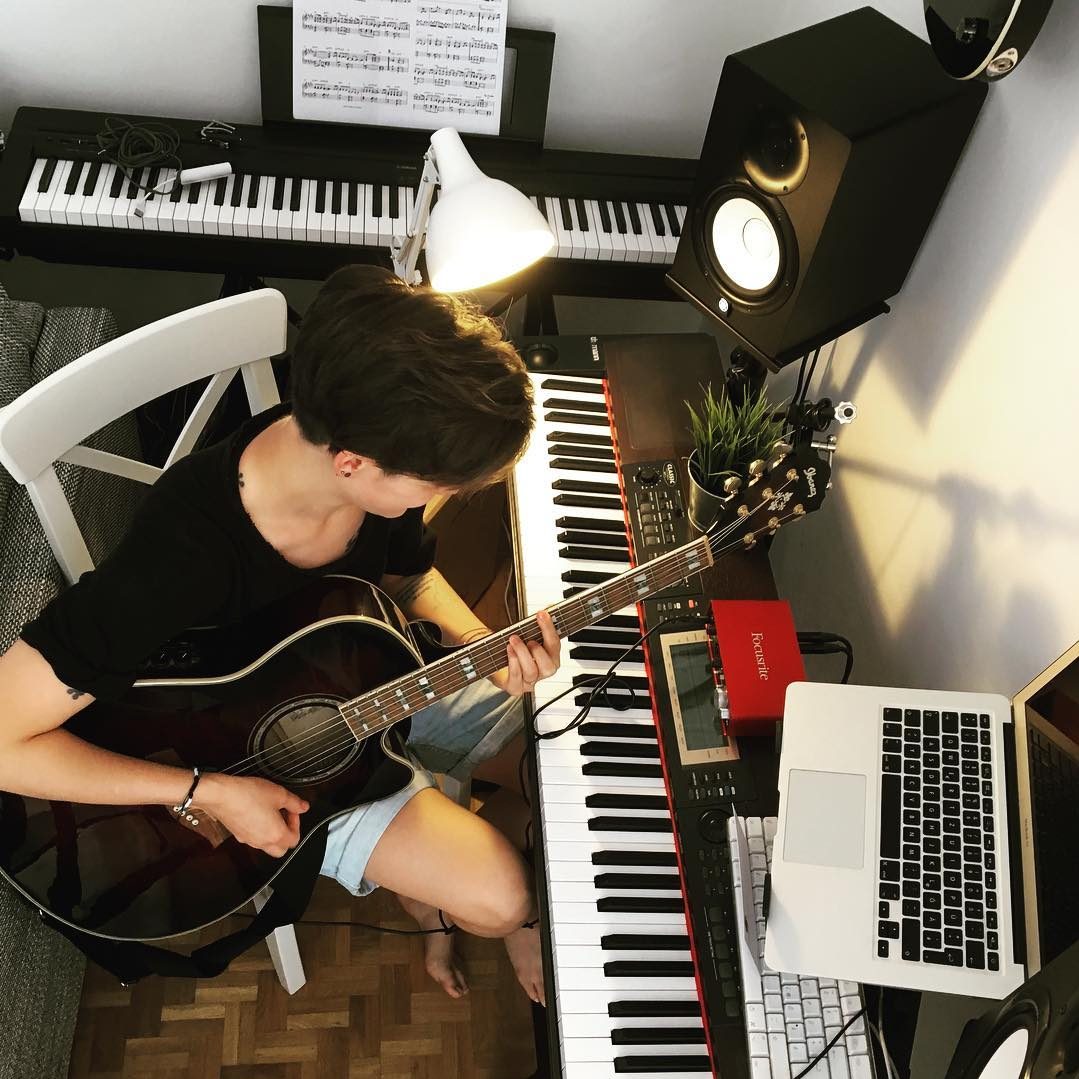
Who Should Own a 2i2?
If you’re a beginner producer, musician, or engineer, the 2i2 will be a great choice for you. It’s highly affordable, and a relatively small investment for beginners diving into music production.
We are confident that the sound profile of this audio interface makes it an excellent choice for people who record music or any audio such as podcasts. The 2i2’s clean and clear sound will surely be a big upgrade over your stock sound card.
If you’re not a beginner, the 2i2’s portability and affordability makes it a great option for a quick travel setup. Don’t expect audiophile quality of course, but expect a lightweight audio interface with nice audio quality to produce on the road.
Available 2i2 Bundles
As you shop for the Scarlett 2i2, you’ll notice that there’s a large number of bundles available. If you’re just diving into music production and don’t own any gear yet this can be a nice option. Choosing a bundle that fits your specific needs can be a great way to save some money.
Most 2i2 bundles will include a microphone and headphones with the required cables and stands. When setting up your first home studio, this can eliminate the guesswork from your shopping. Below, are some of the Scarlett 2i2 bundles you can find on Amazon.
Bundles. Bundles. Bundles.
2i2: 1st Generation vs 2nd Generation
While you’re shopping for the Scarlett 2i2, you may come upon a cheaper version of the 2i2 that looks just like it. This is likely the 1st generation 2i2. Be sure to double-check what generation 2i2 you’re buying, it should be in the product title wherever you’re shopping.
So far, in this review, we’ve covered the latest, 2nd generation 2i2. But, what’s the difference between the two? If you already own a 1st generation 2i2, is it worth the upgrade to the 2nd generation 2i2?
In terms of design, the two generations look very similar. The 2nd generation 2i2 has made some slight visual adjustments. This includes lines being added to the knobs and higher contrast text on the panel to make it easier to see and adjust levels.
As it comes to sound, the 1st gen Scarlett 2i2 was limited to a sample rate of 96kHz. However, the 2nd gen 2i2 now supports up to 192khz sample rates with a 24-bit resolution (but, who records at 192khz anyway?).
With the second generation, also comes improved CPU usage, lower latency and increased headroom. The increased headroom results in less clipping which was a big issue with higher gain instruments on the 1st gen 2i2. This is the greatest improvement in our opinion.
We think you should definitely choose the 2nd generation over the 1st generation if you’re going to buy a 2i2. However, if you already own a 1st gen 2i2, you’re not missing a whole lot. You’re probably better off saving up for something beyond the 2i2 instead of making a marginal upgrade to the 2nd gen 2i2.
Anything Else to Know?
There are a couple more tidbits that might be useful to you if you’re considering the Scarlett 2i2.
All Focusrite audio interfaces are class-compliant (plug and play) with Macs. This means you don’t need to manually install any drivers for the 2i2 if you own a Mac. It is required if you are running a Windows PC. So, setting up and using the 2i2 with a Mac is slightly easier.
The Scarlett 2i2 is compatible with the following operating systems:
Windows 7
Windows 8.1
Windows 10
macOS 10.10
macOS 10.11
(Sorry, Windows 95 users.)
You can check whether your Focusrite product, including the 2i2 is compatible with your specific OS using Focusrite’s OS Compatibility Page.
Scarlett 2i2 Tech Specs:
- Sample Rates: 44.1 kHz, 48 kHz, 88.2 kHz, 96 kHz, 176.4 kHz, 192 kHz
- Max Resolution: 24-bit
- Frequency Response: 20Hz – 20kHz (Mic, Line, Instrument)
- Connectivity: USB
- Inputs: 2 x XLR -1/4″ combo
- Outputs: 2 x 1/4″ (L/R monitors) + 1 x 1/4″ (headphones)
- Phantom Power: Yes
- Power Supply: USB
- Dimensions: 1.77″H x 5.7″W x 4.53″D
- Weight: 1.32 lbs
A Cheaper Scarlett Audio Interface?
Focusrite Scarlett Solo
If you’re stretching your wallet for the Scarlett 2i2, you might want to consider the Scarlett Solo (see current price). It’s true, the 2i2 has become the standard for beginning music producers. However, the Scarlett Solo offers tremendous value at an even lower cost. But, what’s the difference?
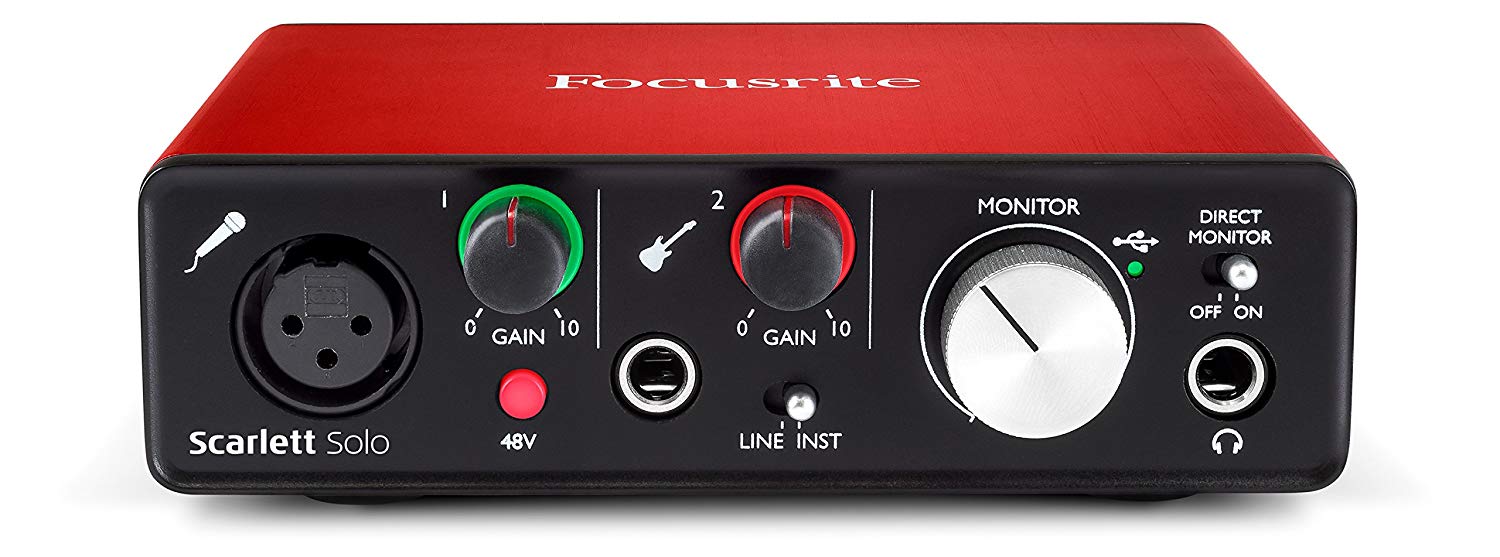
The 2i2 is obviously a better audio interface, but the Solo is very similar. The main difference is that the Scarlett Solo only has one microphone preamp and the Scarlett 2i2 has two.
Although the Solo only has one preamp, it has two separate inputs. There’s an XLR input designed for microphones and a 1/4″ input for instruments and line levels. The 2i2 also has two inputs, however, these are combination inputs that include both XLR and 1/4″ inputs with separate switches to toggle between line and instrument. These additional inputs allow the 2i2 more recording capabilities than the Solo.
The Scarlett Solo also does not have separate knobs to adjust the levels of your monitors and headphones individually as the 2i2 does. The Solo is also limited by two unbalanced RCA outputs on the rear panel, while the 2i2 has two balanced 1/4″ outputs.
Besides those limitations, the Scarlet Solo is still a great value. Our advice is to get the Scarlett Solo if you’re tight on money and are a beginner producer who primarily works on electronic music within your DAW and won’t be recording much. If you just want to record a vocal and single guitar, the Solo will do the job.
If you have plans to record with multiple microphones at the same time or have the extra money to spare, go with the 2i2 for the additional features it offers.
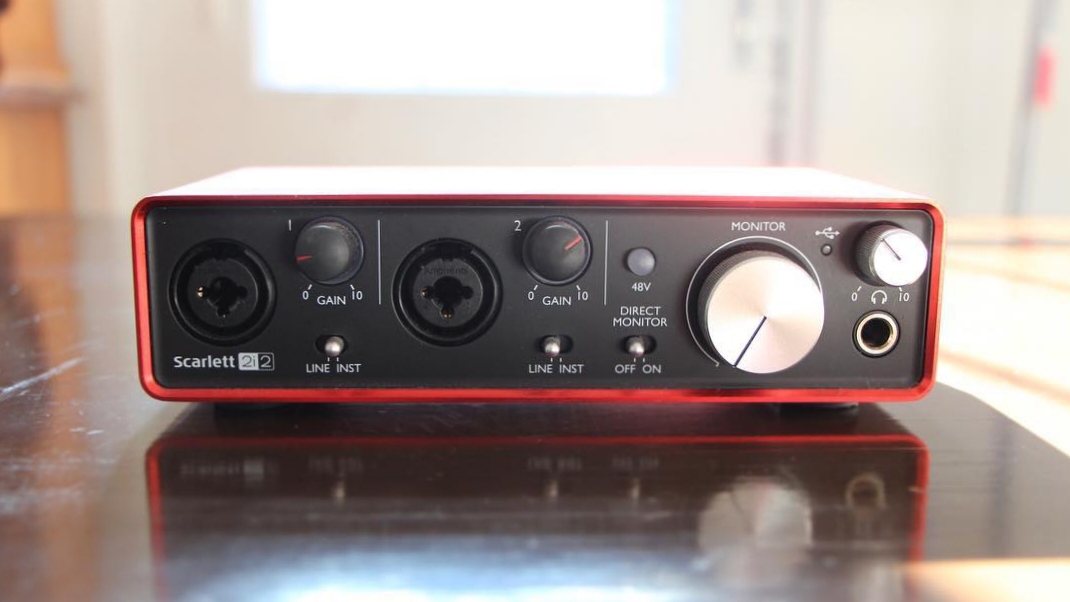
Scarlett 2i2 Conclusion
We are pretty fond of the Focusrite Scarlett 2i2. It’s true that it does have a few shortcomings here and there. However, if looked at from a price-to-value ratio perspective, Focusrite offers an impressive bang for the buck. We believe it packs the most value at its price, especially with the included free software. That’s probably why it’s the best-selling USB audio interface in the world as Focusrite claims. It’s true that there are other similarly priced audio interfaces that do a great job as well. Audient’s iD4 is renowned for it’s high-quality sound. Zoom’s UAC-2 is known for its impressive low latency. However, what we find with the 2i2 is a good balance of these elements.
Overall, the Focusrite Scarlett 2i2 is a great all-around value. The 2i2 remains a no-brainer for beginner producers and is a great audio interface to start producing with. We hope this article has help answer the question, “Why do you need an audio interface?” and decide whether the 2i2 is the right choice for you.




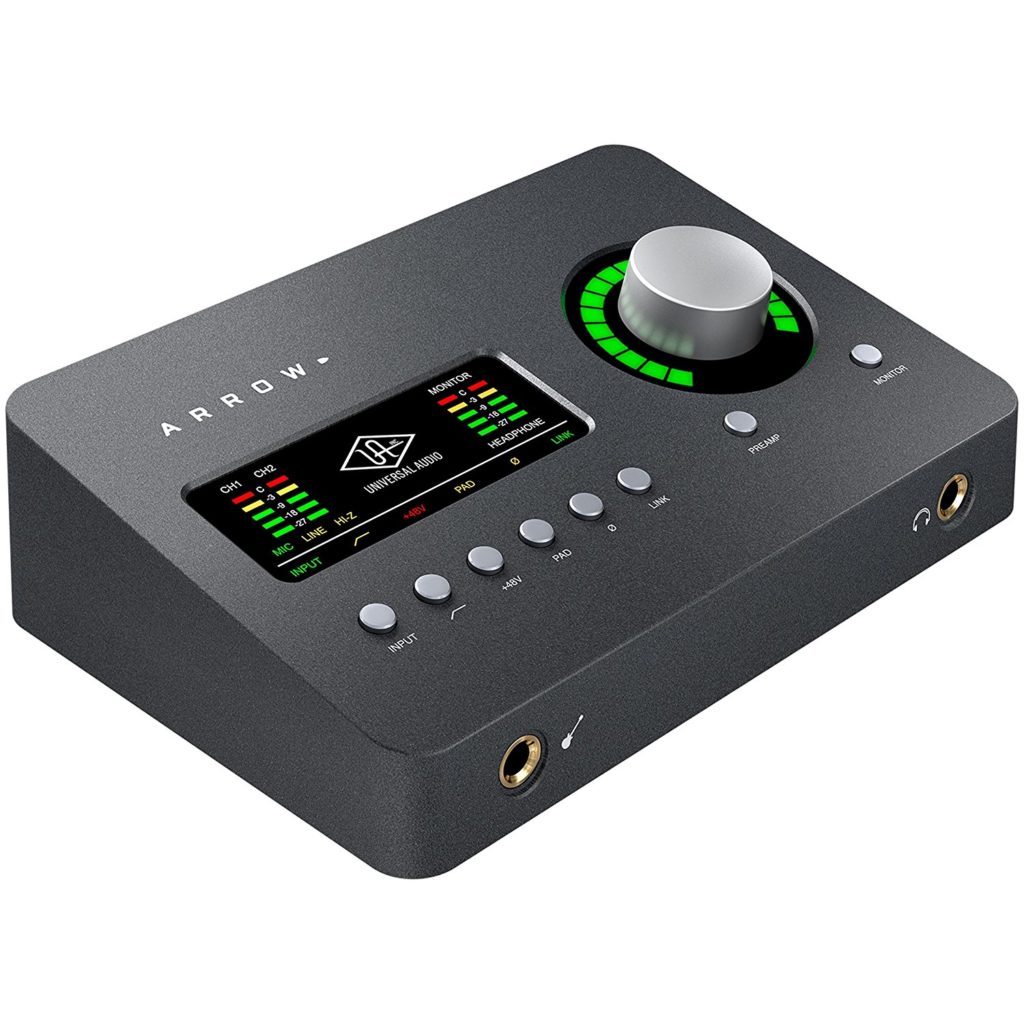

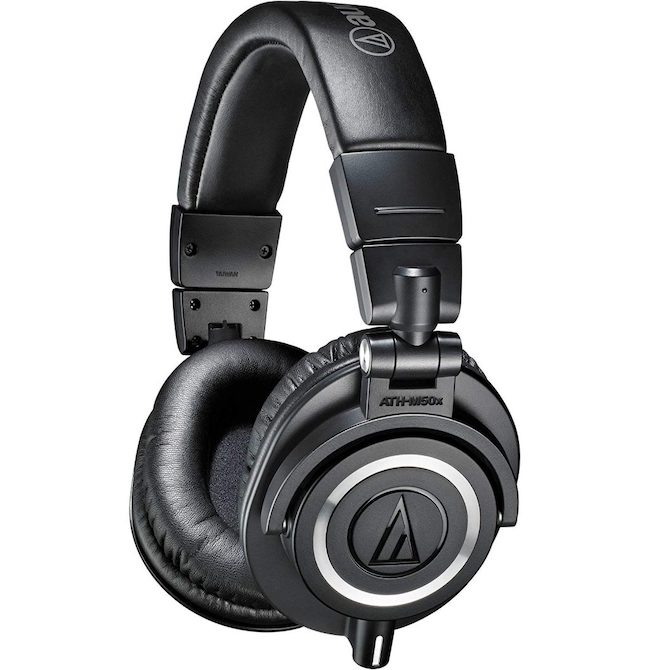

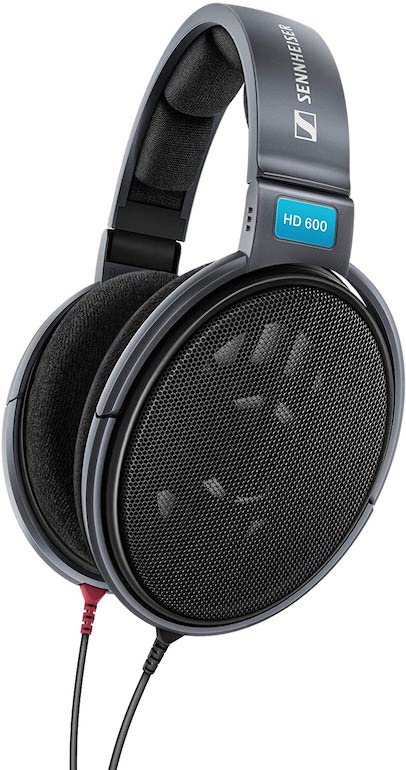











I have a Focusrite Scarlett 212 1st gen. I lost my cd. Can I download cd if I registered?
[…] in lost data. So, it might be time to think about upgrading. An upgrade can be as simple as a new Focusrite Scarlett sound card. Or a completely new system with a faster NVME SSD and powerful Hexa-core CPU such as an AMD Ryzen […]
[…] knowledge. So, it may be time to consider upgrading. An improve could be so simple as a brand new Focusrite Scarlett sound card. Or a totally new system with a sooner NVME SSD and highly effective Hexa-core CPU reminiscent of […]
Had a 2i2, upgraded to Apollo 8, now to a Clarett+ 8Pre. Great sound quality but for complex I/O routing for those of us who’ll never be satisfied with start to finish ITB production, you have to be made aware that the software part of their interface is the biggest POS joke in the history of gear!! Im seriously going to pass on this incredible sound quality just to not have to look at this insulting feces-sandwich of a UI! How this abomination got past whatever QC/focus groups, etc. they may/may not have is beyond comprehension! C’mon FR, DO WAY BETTER! -JB